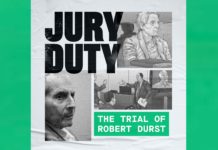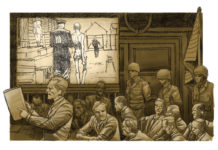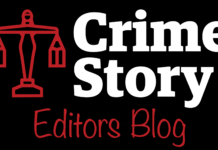Welcome to our round up of the week’s events at crimestory.com.
Our continuing coverage of crime and the criminal legal process offers us the opportunity to identify themes that we plan to explore and reflect upon in the weeks and months ahead.
The week began on the Tuesday after Veterans Day with Molly Miller’s Tiny Evil, Rap and Gang Conspiracy, a piece that kicks off our exploration of the way that gang conspiracy laws are prosecuted in Los Angeles, and raises questions about whether police and prosecutors approach hip hop culture in a way that leaves little room for nuance and tends to criminalize artistic expression. The upcoming trial of Drakeo the Ruler on gang conspiracy charges will offer us opportunities to examine the prosecutors’ use and interpretation of these laws, and place these interpretations in a local and national political and cultural context.
On Thursday, we published the fourth in our series of youth stories from our partnership with The RightWay Foundation (which you can read more about here). In RightWay Youth: James’ Story, James (writing under a pseudonym with Owen Smith) relates his struggle to survive his incarceration for vehicular manslaughter and overcome the trauma, shame and stigma of his responsibility for the loss of a life. Like his fellow RightWay Youth, Lafawn Taylor, James draws inspiration from the memory and example of the slain LA activist and entrepreneur Nipsey Hussle. James is particularly motivated by the ability Hussle had to uplift people, also keep people grounded. “I want to be a better me, not just for me, but for the people I love. So I can give them something better as well.”
We will continue to try to find a way to shed light on the experience of individuals who are trying to work at the grassroots level to stem the flow of young people into our penal system.
On Wednesday and Friday we published the sixth and seventh in our series of stories about the hearings leading up to the trial of Robert Durst for the murder of Susan Berman.
First came Robert Durst Stares into the Camera, in which Sean Smith describes being swept into the theatrics surrounding hearings about whether the defense can compel filmmakers to provide them with outtakes of their work. Then I wrote a piece called Robert Durst’s Lawyer Gets a Compliment which examines superstar attorney David Chesnoff’s difficulty in getting any traction for his arguments in Judge Mark Windham’s courtroom.
Again, the Durst case is instructive in how different it is from the way that the system ordinarily works. The resources expended, the court’s scrupulous examination and re-examination of the defendant’s constitutional rights and the prosecutor’s need to be on top of every nuance of the defense team’s arguments stand in stark contrast to the daily cases that we observe in LA courtrooms where charges are stacked by prosecutors, and bail is set prohibitively high by judges so that defendants and public defenders are incentivized to accept plea agreements.
One final piece of news. I spent the week in the writers room of a new project which was born out of my work in creating Crime Story. I can’t say very much about the project, but I can confirm that it involves David Simon, George Pelecanos, Ed Burns, Nina Noble and Bill Zorzi (five members of the team that brought us The Wire) as well as Baltimore journalists D. Watkins and Justin Fenton. The reason I can confirm that much is that David offered the tweet below on our first day in the room.

For those of you wondering how you can catch up on previous Crime Story newsletters, just click here and your question shall be answered.
We close this week, as is our habit, with Hannah Teich’s curated selection of some of the more interesting stories from Crime Story Daily over the past week.
Hannah, who edits this Daily section, groups the aggregation into four general topic areas: criminal justice policy reporting; muckraking/watchdog reporting; complex crime storytelling; and stories that examine the impact of criminal justice and true-crime in the culture.
Click here to go to Hannah’s weekly essay.
Thanks for reading and listening.






